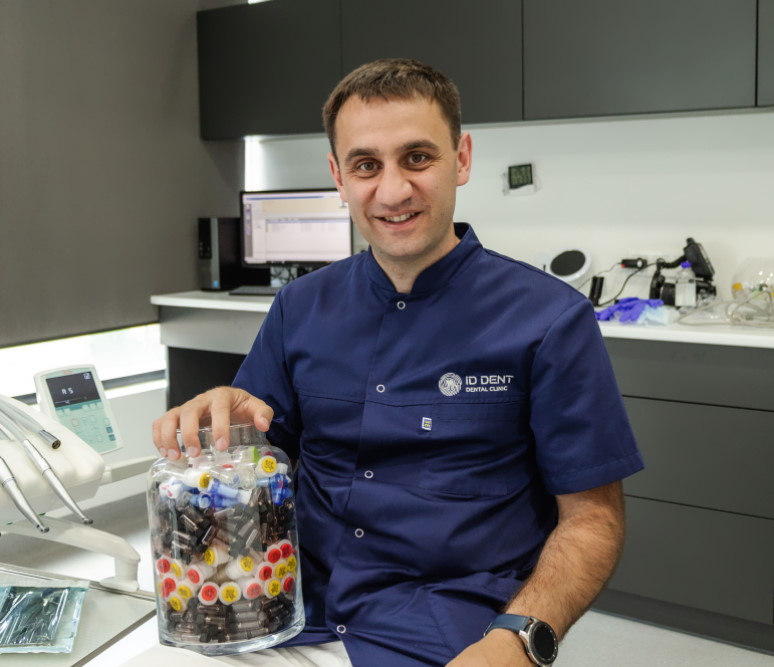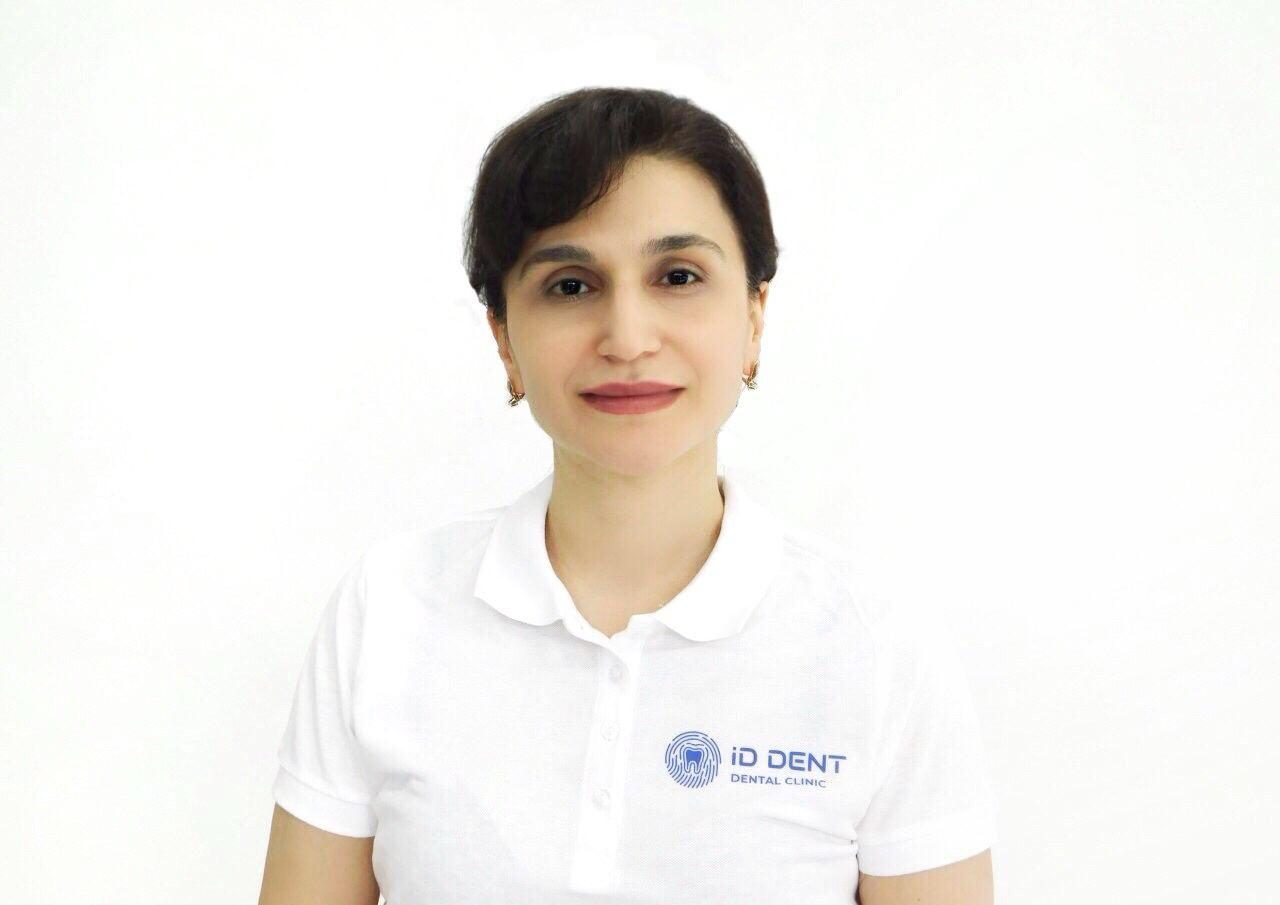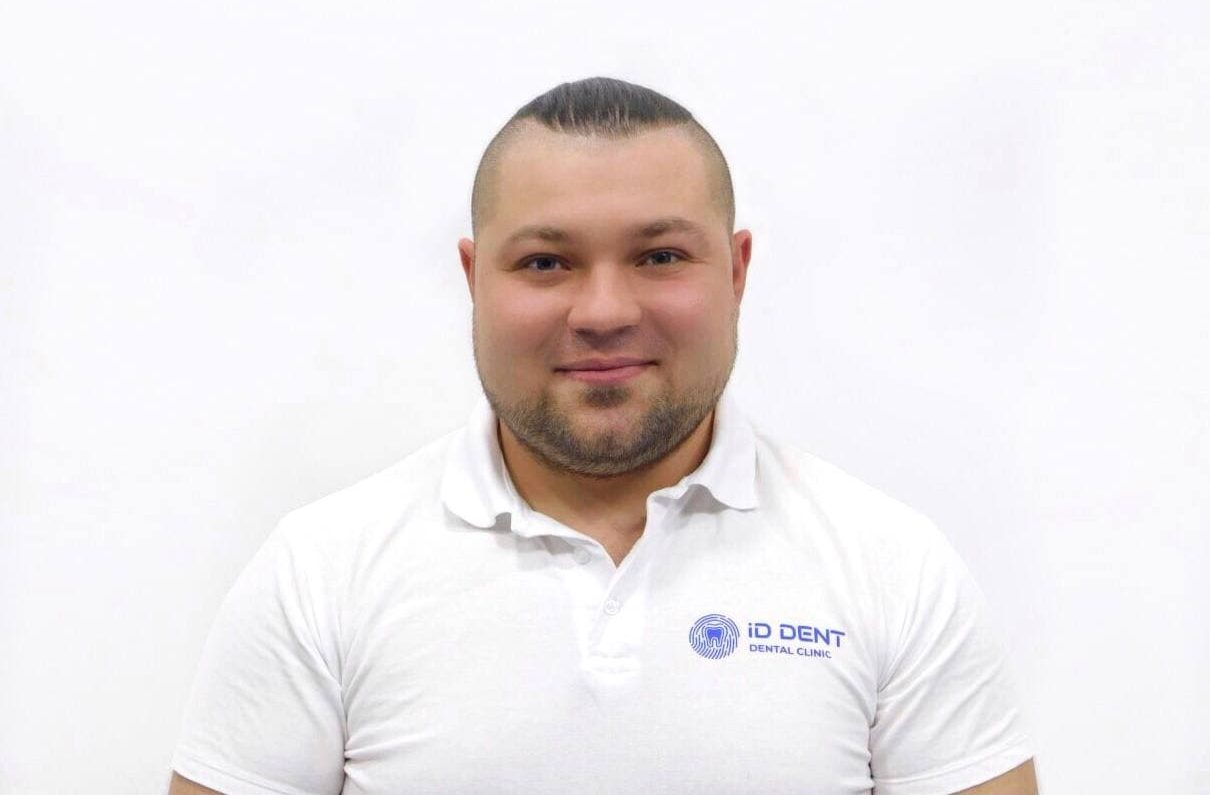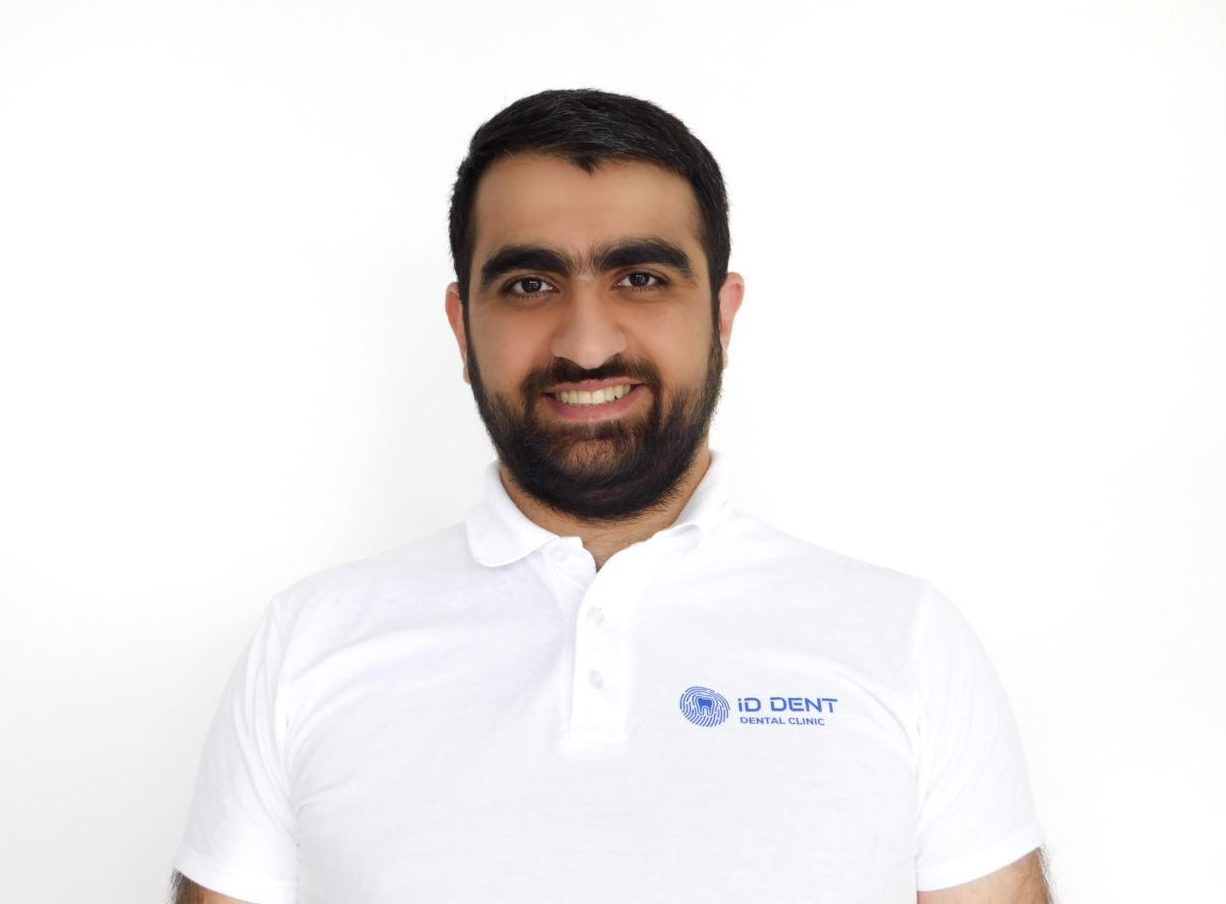Atypical Wisdom Tooth Extraction
Atypical wisdom tooth extraction is necessary in cases where the tooth is incorrectly positioned in the jaw, if the tooth is not properly aligned, does not erupt completely, or trauma affects the adjacent teeth. The stomatology surgeons at ID Dent are experienced in conducting this procedure safely and painlessly for you!
| Procedure Results | Satisfactory |
| Recovery Period | Depends on the complexity |
| Number of Visits | Usually 1 visit |
| Postoperative Condition | Normal condition |
| Rehabilitative Measures | Instructions and medication |

Wisdom teeth, or “eights,” appear in adulthood and often cause a lot of trouble for their owners. If a molar grows incorrectly, injures neighboring teeth, or has an abnormal shape, atypical wisdom tooth extraction is required. This... Read more
Wisdom teeth, or “eights,” appear in adulthood and often cause a lot of trouble for their owners. If a molar grows incorrectly, injures neighboring teeth, or has an abnormal shape, atypical wisdom tooth extraction is required. This is a surgical procedure that involves the use of surgical instruments and a drill.
Atypical extraction is performed by a dental surgeon. According to indications and the patient’s wishes, the procedure may be performed under sedation — in a medication-induced sleep. Upon completion of the manipulations, you receive instructions on oral care, as well as a prescription for medications that need to be taken for rehabilitation.
If your wisdom teeth are bothering you, we invite you to a consultation at the ID Dent dental clinic in Forest massif. Guarantee of comfortable extraction, reasonable prices, qualified approach — benefits you receive!

Wisdom tooth extraction is a very common procedure in dentistry, faced by patients all over the world. However, this operation does not always go standardly. Sometimes atypical removal is required, which is related to specific anatomical or clinical features of the tooth. Atypical wisdom tooth removal is necessary when the tooth is positioned incorrectly, partially erupted, or causes complications. Understanding the features of this procedure helps patients better prepare for the operation and reduce possible risks.
When is atypical wisdom tooth extraction required?
Atypical wisdom tooth extraction is required in the following cases:
- non-standard tooth position. It grows at an angle, towards adjacent teeth, or towards the jaw;
- incomplete eruption. The tooth is partially covered by the gum and cannot fully erupt;
- inflammatory processes. Pericoronitis, abscesses, cysts, and other inflammatory diseases;
- damage to neighboring teeth. The third molar places pressure on the “sevens”, causing enamel damage and cavities;
- tight root position. The roots of the wisdom tooth are tightly adjacent to the roots of neighboring teeth or anatomical structures (e.g., nerves).
Atypical wisdom tooth extraction is a complicated but necessary procedure to avoid serious complications associated with improper tooth growth. With thorough preparation, professional execution of the operation, and proper postoperative care, you will recover very quickly. Understanding all aspects of the procedure clearly following the dentist’s recommendations will help patients go through this challenge with minimal difficulties.
Preparing for the procedure
Preparation includes several stages:
- Dentist consultation. The doctor assesses the condition of the tooth, conducts an examination, and assigns necessary studies.
- Diagnosis. X-ray or CT to determine the exact position of the tooth and its roots.
- Tests. Complete blood count, coagulogram, and other tests.
- Surgery planning. Developing a procedure plan considering anatomical features and the condition of the tooth.
- Preoperative recommendations. Instructions on food, drinks, and medications before the surgery.
In some cases, antibiotics or anti-inflammatory drugs may be required. Your dentist will tell you more about preparation and procedure details during a consultation.
How is atypical wisdom tooth extraction performed?
The procedure for atypical wisdom tooth extraction includes several stages:
- Local anesthesia, sometimes sedation.
- Incision of the gum to access the tooth.
- If necessary, part of the bone tissue around the tooth is removed.
- In some cases, the tooth is divided into several parts for easier removal.
- Removing the tooth using special instruments.
- After removing the tooth, the wound is sutured.
Removing a complex tooth is a serious surgical procedure that can be trusted only to a qualified specialist. Choose an experienced dentist and strictly follow their recommendations for successful recovery.
Recovery and oral care after atypical wisdom tooth extraction
After atypical wisdom tooth extraction, you need to follow recommendations for successful recovery:
- avoid physical activity in the first 24-48 hours;
- apply cold to the cheek to reduce swelling and pain;
- follow doctor’s prescriptions for painkillers and anti-inflammatory drugs;
- avoid hard, hot, and spicy foods. The diet should be soft and cool;
- carefully brush your teeth, avoiding the wound area. Use antiseptic solutions for rinsing;
- if you experience severe pain, bleeding, or other unusual symptoms, consult a doctor.
Follow the doctor’s recommendations to avoid complications and speed up the healing process. If you have any questions or concerns, feel free to contact your dentist.
How is the price for atypical wisdom tooth extraction formed?
The cost of atypical wisdom tooth extraction depends on several factors:
| Factor | Influence on cost |
|---|---|
| Procedure complexity | The more complex the removal, the higher the price |
| Type of anesthesia | General anesthesia is more expensive than local |
| Diagnostic procedures | X-ray and CT can increase the cost |
| Qualification of the doctor | Highly qualified specialists are more expensive |
| Region | Prices may vary depending on the region |
| Additional procedures | Treatment of inflammation, bone grafting |
The price for atypical wisdom tooth extraction is formed based on several key factors. Firstly, the cost depends on the complexity of the operation since atypical removal often requires more complex surgical techniques compared to regular removal. Secondly, an important factor is the cost of services of qualified dental surgeons and the use of modern medical equipment. The third aspect is the need for additional research, such as X-rays or CT scans, for accurate diagnostics and planning of intervention. You should not economize on such procedures, as the quality of work and the materials used directly influence the safety and success of the operation, as well as the subsequent recovery. Cheap alternatives can lead to complications and additional expenses for correcting problems, making investments in quality treatment a more reasonable choice.
Atypical wisdom tooth extraction at ID Dent clinic
For complex wisdom tooth extraction, refer to a good clinic – for example, a dental center with an impeccable reputation ID Dent in the Forest massif in Kyiv. A team of professional doctors, who are highly qualified, will handle the task skillfully. The pricing policy of the private dentistry ID Dent is democratic, the cost of services corresponds to quality and service. Furthermore, the clinic is conveniently located on the Left bank of Kyiv, near the Lesnaya and Chernigovskaya metro stations. To consult or make an appointment, call our administrators.
Frequently asked Questions
How much does atypical wisdom tooth extraction cost?
The price of atypical "eights" extraction depends on the complexity of the specific case. You can familiarize yourself with approximate prices in the price list on our website, but the exact amount can only be calculated after consultation and diagnosis.
When is atypical extraction necessary?
Atypical extraction is necessary when a wisdom tooth erupts incorrectly, causes pain, inflammation, damages neighboring molars, or there is not enough space for normal growth.
How is the atypical wisdom tooth extraction procedure performed?
After diagnostics and radiography, the surgeon performs local anesthesia, cuts the gum and, if necessary, the bone. Then the tooth is removed in parts or as a whole, followed by sutures.
Is it painful?
No, thanks to anesthesia, you don't feel pain. After the operation, there may be discomfort, which is alleviated by pain relievers as recommended by the doctor.
What risks and complications are possible?
Complications such as infection, dry socket, nerve or adjacent tooth damage are possible. Risks are minimized by following the doctor’s recommendations and proper oral hygiene.
How long does recovery take?
Initial healing takes several days, but full recovery takes about two weeks. During this period, it is important to follow doctor's prescriptions, reduce physical exertion, and adhere to a diet.
How to care for the oral cavity after atypical wisdom tooth extraction?
Care includes gentle rinsing of the mouth with saline solution, avoiding hard foods, refraining from cigarettes and alcohol, and regular dentist visits for examination and healing control.
What to do if complications arise with atypical tooth extraction?
If you experience severe pain, swelling, bleeding, or symptoms of infection, contact your doctor immediately. It is important to follow all prescriptions and recommendations for quick and safe recovery.

 Kyiv, st. Bratislavskaya 14B
Kyiv, st. Bratislavskaya 14B Mon.-Fri. 9-20, Sat.-Sun. 10-18
Mon.-Fri. 9-20, Sat.-Sun. 10-18







